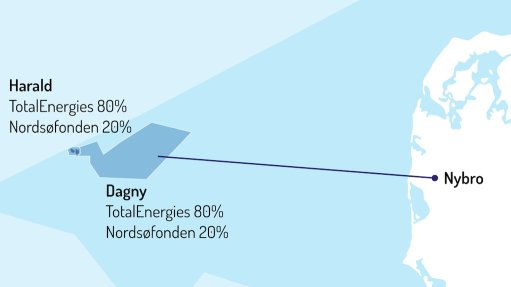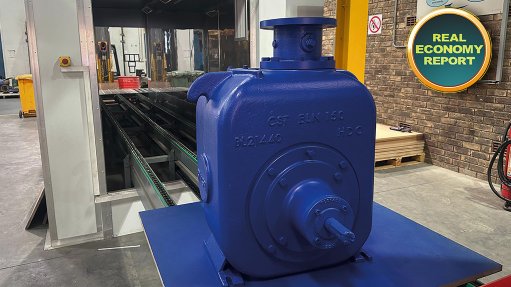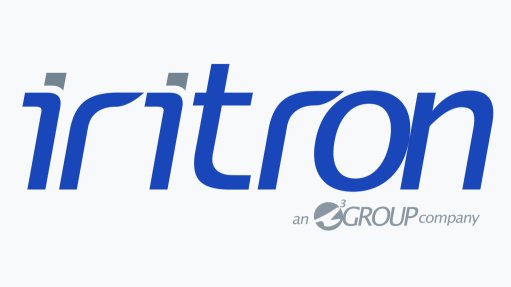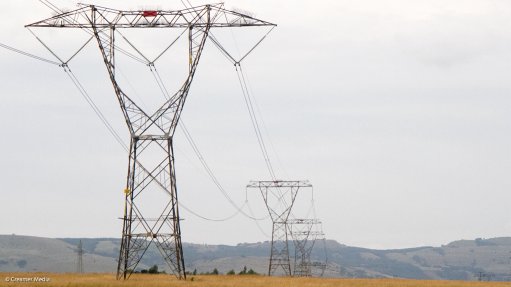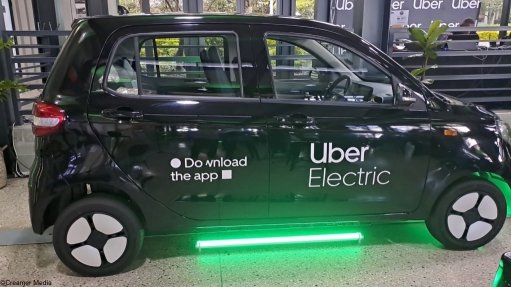HVAC system safety highlighted in the time of Covid-19
Heating, ventilation and air-conditioning (HVAC) systems play a key role in mitigating the spread of airborne pathogens in an enclosed office environment, especially that of offices with few or no windows that can open, said HVAC systems services company SFI Group founder and CEO Edward Hector.
He presented a case for enhanced HVAC systems in the time of Covid-19 during a Planet Shapers webinar hosted by the Green Building Council of South Africa (GBCSA) on September 2.
According to the GBCSA, as more South Africans prepare to return to the office during a time of Covid-19, there has been a dramatic increase in awareness and concerns regarding indoor air quality.
The council states that, now more than ever, a building’s health benefits play a vital role in the lives of tenants and employees.
Hector said indoor air quality (IAQ) could improve a building’s environment and can even improve the cognitive ability of the people that use it. With improved IAQ, he said, things like sick building syndrome and employee absenteeism were reduced.
Hector also said that, obviously in the case of Covid-19, improved IAQ mitigated the spread of pathogens in the air.
However, he noted that in World Health Organisation (WHO) research conducted in 2016, it was found that about 90% of the population living in urban areas was exposed to air quality that did not meet the minimum guidelines of the WHO.
“This boils down to particulate matter (PM) that is present in the air.”
In terms of Covid-19, Hector said PM had been increasingly highlighted, especially indoors and within office environments, with the focus being on HVAC filtration systems and their ability to filter-out or neutralise PM.
“With Covid-19, there has also come a rethink of building ventilation rates. However, it is important to bear in mind that filters do not catch all PM and this is why there is a need to consider things like ultraviolet (UV) lights.”
He also pointed out that IAQ standards (such as those set out by the International Standards Organisation) were minimum requirements, and according to IAQ research, it was better to take a more focused approach to improving IAQ to exceed IAQ standards in an effort to protect people.
“The average office environment is not designed to a very high quality standard of IAQ. Generally the ventilation in an office environment is designed to catch PM of 10 μm.” Bacteria and viruses are smaller than this, at about 0.01 μm.
However, Hector said the solution was not as simple as changing filters to those of a higher rating, because indoor environments required a detailed understanding of airflows and HVAC and office-space requirements.
HVAC systems are commonly fitted with high-efficiency particulate arrestance (HEPA) filters, but he advised that, during the Covid-19 pandemic, additional filtration was required to disable viruses and that UV lights could be used in such instances.
In terms of what PM can be removed, filters such as the HEPA filter have the ability to remove visible PM including dust, pollen, tobacco and a degree of mould, while UVC has the ability to remove or deactivate the invisible and harmful properties of moulds, bacteria and viruses.
However, Hector said not just any UV light could be used, as there were three categories of UV light and the one used to kill Covid-19 and other pathogens is the UVC version.
UV bandwidths are part of an electromagnetic spectrum, and comprise UVA, UVB and UVC bandwidths. UVA is typically used for the curing of inks, coatings and adhesives and includes so-called “black lamps” for inspection purposes, while UVB light is used for tanning lamps.
UVC is shortwave UV light, between 190 nm and 280 nm, which is used for germicidal irradiation, in which a viral or bacterial organism’s deoxyribonucleic acid cells are broken, thereby incapacitating it and making it unable to replicate, and thereby rendering it harmless.
“What we are seeing is that the use of UVC is becoming better understood,” he said, adding that UV lights had been around for many years and had defined its relevance, particularly in hospital-type environments where pathogens were prevalent.
These pathogens were prevalent in air-conditioning systems because of the biofilms they develop. These biofilms tend to grow on air-conditioner coils and in places like drip-trays.
UVC lights can be used in ventilation systems for two reasons, to kill airborne pathogens and cleaning of air conditioning coils.
Using UVC light on coils reduces the need to use chemical cleaning of coils, and also has the effect of increasing airflow through coils, thereby reducing energy consumption of the HVAC unit as it will operate more efficiently.
Article Enquiry
Email Article
Save Article
Feedback
To advertise email advertising@creamermedia.co.za or click here
Comments
Announcements
What's On
Subscribe to improve your user experience...
Option 1 (equivalent of R125 a month):
Receive a weekly copy of Creamer Media's Engineering News & Mining Weekly magazine
(print copy for those in South Africa and e-magazine for those outside of South Africa)
Receive daily email newsletters
Access to full search results
Access archive of magazine back copies
Access to Projects in Progress
Access to ONE Research Report of your choice in PDF format
Option 2 (equivalent of R375 a month):
All benefits from Option 1
PLUS
Access to Creamer Media's Research Channel Africa for ALL Research Reports, in PDF format, on various industrial and mining sectors
including Electricity; Water; Energy Transition; Hydrogen; Roads, Rail and Ports; Coal; Gold; Platinum; Battery Metals; etc.
Already a subscriber?
Forgotten your password?
Receive weekly copy of Creamer Media's Engineering News & Mining Weekly magazine (print copy for those in South Africa and e-magazine for those outside of South Africa)
➕
Recieve daily email newsletters
➕
Access to full search results
➕
Access archive of magazine back copies
➕
Access to Projects in Progress
➕
Access to ONE Research Report of your choice in PDF format
RESEARCH CHANNEL AFRICA
R4500 (equivalent of R375 a month)
SUBSCRIBEAll benefits from Option 1
➕
Access to Creamer Media's Research Channel Africa for ALL Research Reports on various industrial and mining sectors, in PDF format, including on:
Electricity
➕
Water
➕
Energy Transition
➕
Hydrogen
➕
Roads, Rail and Ports
➕
Coal
➕
Gold
➕
Platinum
➕
Battery Metals
➕
etc.
Receive all benefits from Option 1 or Option 2 delivered to numerous people at your company
➕
Multiple User names and Passwords for simultaneous log-ins
➕
Intranet integration access to all in your organisation







